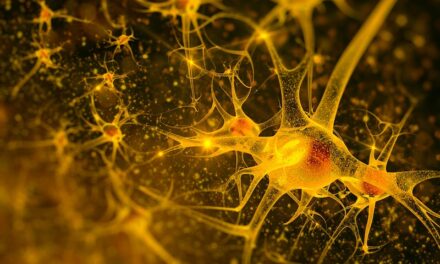Summary: Researchers have visualized the first atomic-level structure of protein clumps linked to Huntington’s disease, paving the way for new diagnostic tools and treatments.
Takeaways:
- Groundbreaking Visualization: Researchers combined advanced computer simulations and experimental methods to provide the first detailed image of protein clumps associated with Huntington’s disease.
- Implications for Diagnostics and Treatments: The findings are crucial for developing diagnostic tools and treatments to monitor and combat Huntington’s disease.
- Interdisciplinary Approach: The study highlights the power of integrating computational biology and structural experiments, offering insights that could extend to other diseases like Alzheimer’s and Parkinson’s.
University of Bergen researcher Markus Miettinen is among the first scientists to provide a detailed description of protein clumps associated with Huntington’s disease. The findings, which could pave the way for new diagnostic tools and treatments, were recently presented in an article in Nature Communications.
“There is hope that our research can lead to treatments for Huntington’s disease,” says chemist Markus Miettinen from the University of Bergen, Norway and the Computational Biology Unit. “Understanding the structure of the protein clumps is a crucial piece of the puzzle in understanding how these proteins can cause disease. Our new molecular findings are essential for further developing diagnostic tools and imaging techniques to detect and monitor disease proteins in patients.”
Together with an international team of researchers—including Mahdi Bagherpoor Helabad from the Max Planck Institute of Colloids and Interfaces, Irina Matlahov, Greeshma Jain, and Patrick C. A. van der Wel from the University of Groningen, Raj Kumar and Markus Weingarth from the University of Utrecht, and Jan O. Daldrop from Freie Universität Berlin—he has combined advanced computer simulations and experimental methods to achieve these groundbreaking results.
The findings are presented in the article Integrative determination of atomic structure of mutant huntingtin exon1fibrils implicated in Huntington disease, published online in Nature Communications.
Revealing Protein Clumps Via New Method
Huntington’s disease is a fatal disease caused by an inherited mutation that makes a protein form unnatural clumps. These protein clumps play a role in disease development, but until now, we have lacked a good understanding of what they look like at atomic level.
By combining various computer- and experiment-based approaches, the researchers have now managed to visualize the first detailed picture of these disease-related clumps. The methods used are an exciting example of the interdisciplinary approach that represents the future of structural biology—and pave the way for the development of diagnostic tools and treatments that are urgently needed.
“We use advanced computer simulations to mimic the behavior of these molecules as realistically as possible,” says Miettinen. “Our work bridges the gap between simulations and experiments, providing insights into data that are otherwise difficult to interpret. Beyond the new insights into Huntington’s disease, we have developed tools that make molecular simulations more accessible to researchers worldwide.”
This type of protein clumping is not only known in connection with Huntington’s disease but also in Alzheimer’s, Parkinson’s, and other diseases. The structure of the clumps in Huntington’s disease is remarkably different from other disease proteins, opening up several new scientific questions about their properties and formation mechanisms.
Further Reading
Research Funding
The research project is largely funded by foundations supporting Huntington’s disease and made possible by support from families affected by the disease and the general public.
“It is exciting to see their recognition of the importance of research into the fundamental causes of the disease,” says Miettinen.
Featured image: Visualization of protein clumps associated with Huntington’s disease, produced by combining simulations and several complementary types of experiments. Photo: Markus Miettinen, UiB/CBU.





